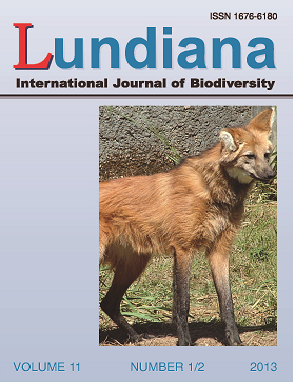Evaluating personality traits of captive maned wolves, Chrysocyon brachyurus (Illiger, 1815) (Mammalia: Canidae), for conservation purposes
DOI:
https://doi.org/10.35699/2675-5327.2013.23838Keywords:
Maned wolf, personality tests, boldness score, questionnairesAbstract
The study of animal personality has important implications in conservation programs. When reintroduction is used for the preservation of a species, the survival ratio of reintroduced animals needs to be high. The determination of animal personality helps choosing the right animals, therefore increasing their survival chances and also increasing the reintroduction success. Three captive, male maned wolves were chosen for personality evaluation. Two personality tests were carried out and compared: The boldness score test estimated the level of boldness from a series of behaviors divided into bold, shy and fear categories; and questionnaires showed how zookeepers perceived the personality of the same three animals, while they were working with them. According to the boldness score calculation, Maned Wolf Two (MW2) was the boldest, followed, in order, by MW1 and MW3. According to the questionnaires, MW1 was the boldest, followed by MW2 and by MW3. Reasons for these contradictory results and variables that should be considered in both tests for increasing their accuracy are discussed. Used together, these tests showed to be helpful tools for choosing among individuals to be released in the wild.
Downloads
Published
Issue
Section
License

This work is licensed under a Creative Commons Attribution-NonCommercial 4.0 International License.

